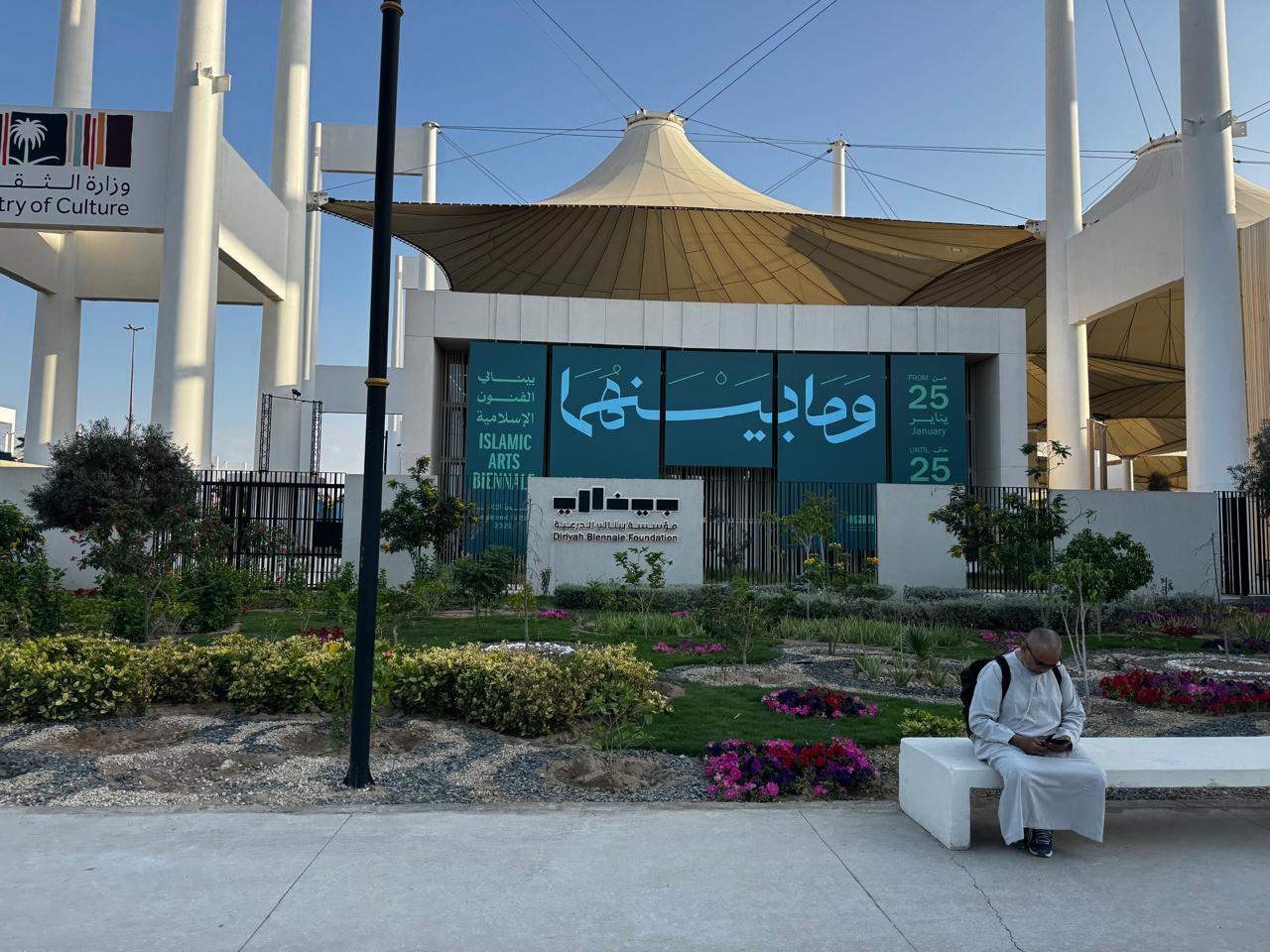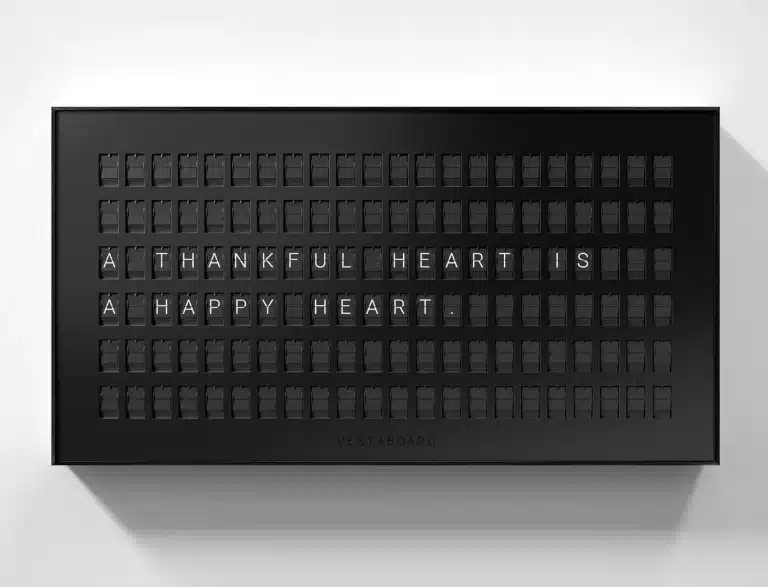Introduction: The Meaning Behind “Between Them (ما بينهما)”
The Islamic Arts Biennial Edition 2 (بينالي الفنون الإسلامية النسخة ٢), hosted in Jeddah, introduces an immersive exploration of the theme “Between Them (ما بينهما)”, a profound concept rooted in Quranic philosophy. The phrase originates from سورة الرحمن (١٩-٢٠):
“”مَرَجَ الْبَحْرَيْنِ يَلْتَقِيَانِ * بَيْنَهُمَا بَرْزَخٌ لَا يَبْغِيَانِ””
This concept highlights the interplay of opposites, dualities, and the harmonious coexistence of elements a principle deeply reflected in Islamic art, architecture, and spiritual philosophy. The biennial’s curators have leveraged this idea to construct an exhibition space that embodies the balance between tradition and modernity, the physical and metaphysical, and the seen and the unseen.
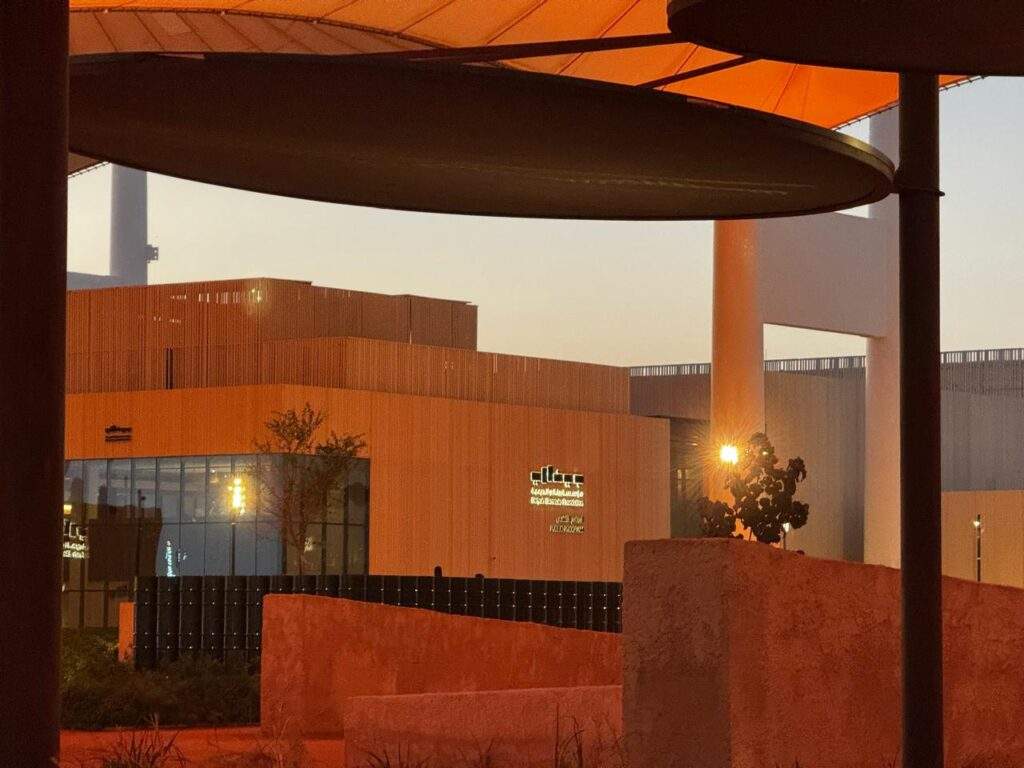
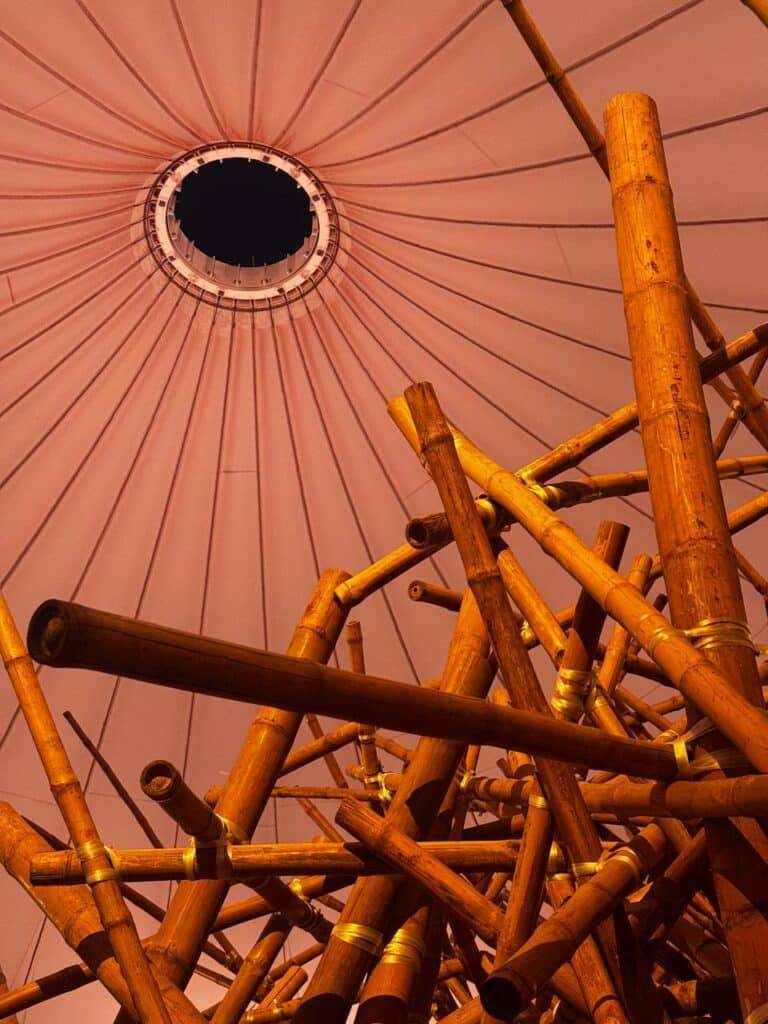
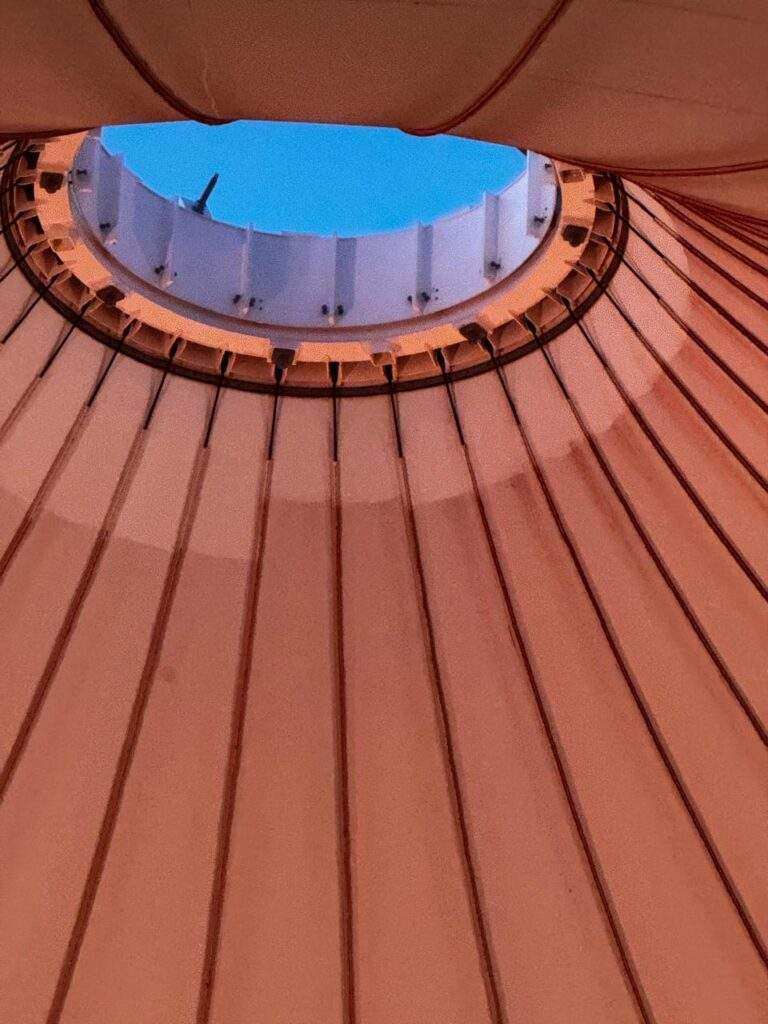
A Unique Layout: Five Distinct Sections of the Biennial
Unlike previous editions, the Islamic Arts Biennial Edition 2 (بينالي الفنون الإسلامية النسخة ٢) is structured around five distinctive sections, each curated to evoke deep contemplation and interaction with Islamic artistic heritage and its contemporary expressions.
The Sacred Cloth: A Tribute to the Kaaba’s Kiswah
One of the key returning elements from the previous biennial is the exhibition dedicated to the Kaaba’s Kiswah. While it echoes last year’s experience, it presents a new interpretative approach, allowing visitors to engage with the historical craftsmanship and sacred significance of the textile in a reimagined setting.
The Outdoor Pavilion: A Dynamic and Interactive Experience
A major highlight of this year’s biennial is the expansive outdoor exhibition space, which has evolved into an interactive and multi-sensory journey. Unlike the previous edition, this year’s setup features immersive installations beneath a grand architectural canopy, symbolizing shelter, unity, and the boundless nature of Islamic creativity.
The Architectural Genius of the Venue: Pilgrims’ Hall as an Exhibition Space
One of the most striking aspects of the biennial is the choice of venue itself. The event is housed in the Hajj Terminal (Pilgrims’ Hall) in Jeddah, an architectural masterpiece that has been transformed into a cultural and artistic arena. The decision to repurpose a space originally designed to welcome millions of Hajj pilgrims into an artistic hub is a profound artistic and architectural statement in itself.
- The terminal’s design employs Glass Reinforced Concrete (GRC) panels, allowing for a rhythmic interplay of light and shadow.
- The modular architectural elements create a fluid and harmonious environment, enhancing the visitor’s spiritual and aesthetic experience.
- This adaptive reuse not only showcases the versatility of Islamic architecture but also demonstrates the seamless integration of form and function.
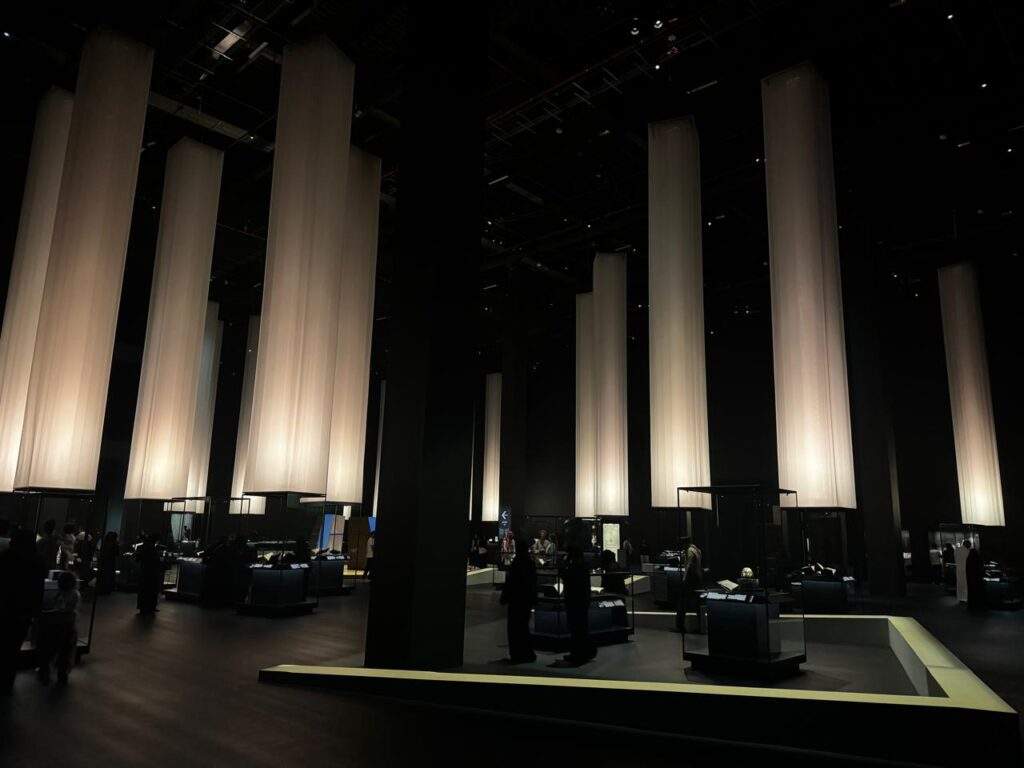
Seamless Parking and Visitor Experience
A significant improvement in the 2024 edition is the seamless experience in visitor accessibility and parking. The logistical planning has ensured that parking is efficient and well-organized, allowing guests to navigate the venue with ease. This contributes to an overall stress-free and immersive exhibition journey.
A Link to the Future: 🔗 Book Your Visit احجز تذكرتك هنا
To facilitate the visitor experience, the biennial offers an easy online reservation system, allowing guests to book their visit effortlessly and avoid unnecessary waiting times. You can secure your ticket via [official booking link here].
“الفن الإسلامي هو جسر بين الماضي والحاضر، حيث يلتقي التراث العريق بالإبداع المعاصر في فضاء واحد.”
The Islamic Arts Biennial Edition 2 (بينالي الفنون الإسلامية النسخة ٢) is more than just an art exhibition—it is a convergence of cultural dialogue, architectural innovation, and spiritual reflection. With its thought-provoking theme, dynamic spatial design, and an array of deeply immersive installations, this biennial cements its place as a landmark event in the global Islamic art scene.
For those seeking a profound artistic and architectural experience, this year’s biennial is a must-visit, offering a journey that not only celebrates Islamic heritage but also redefines the way we engage with its artistic expressions in a contemporary context.
Islamic Arts Biennial Edition 2: A Journey Through the Sacred Exhibits
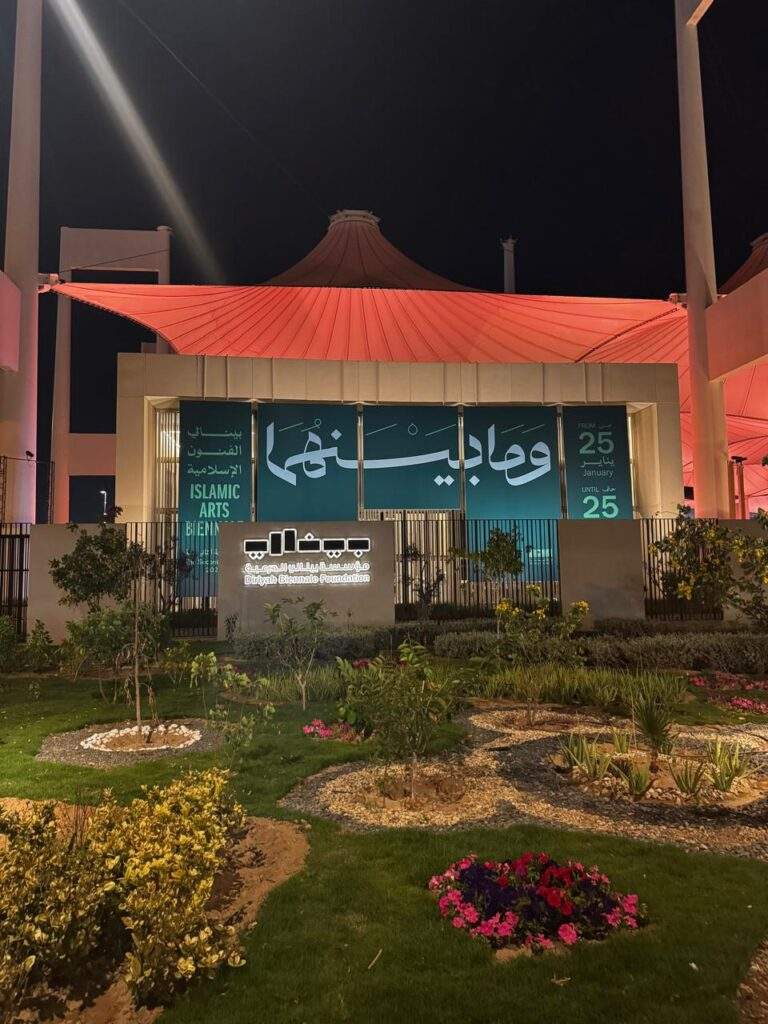
Introduction: An Exhibition Rooted in Spiritual Magnitude
The Islamic Arts Biennial Edition 2 (بينالي الفنون الإسلامية النسخة ٢), held in Jeddah, unfolds an immersive experience that intricately weaves together historical, artistic, and spiritual narratives. This year’s edition builds upon its predecessor while introducing a new thematic division of five curated sections. Each section aims to invoke a deep sense of reverence for Islamic heritage, while also allowing contemporary artistic interpretations to enrich the dialogue between the past and present.
One of the central themes of the biennial is “Between Them” (ما بينهما), which alludes to a profound spiritual and artistic exploration of sacred spaces and their material and metaphysical significances. The exhibition is structured around five distinct sections, each offering a unique perspective on Islamic artistic and spiritual traditions.
The Five Sections of the Islamic Arts Biennial Edition 2
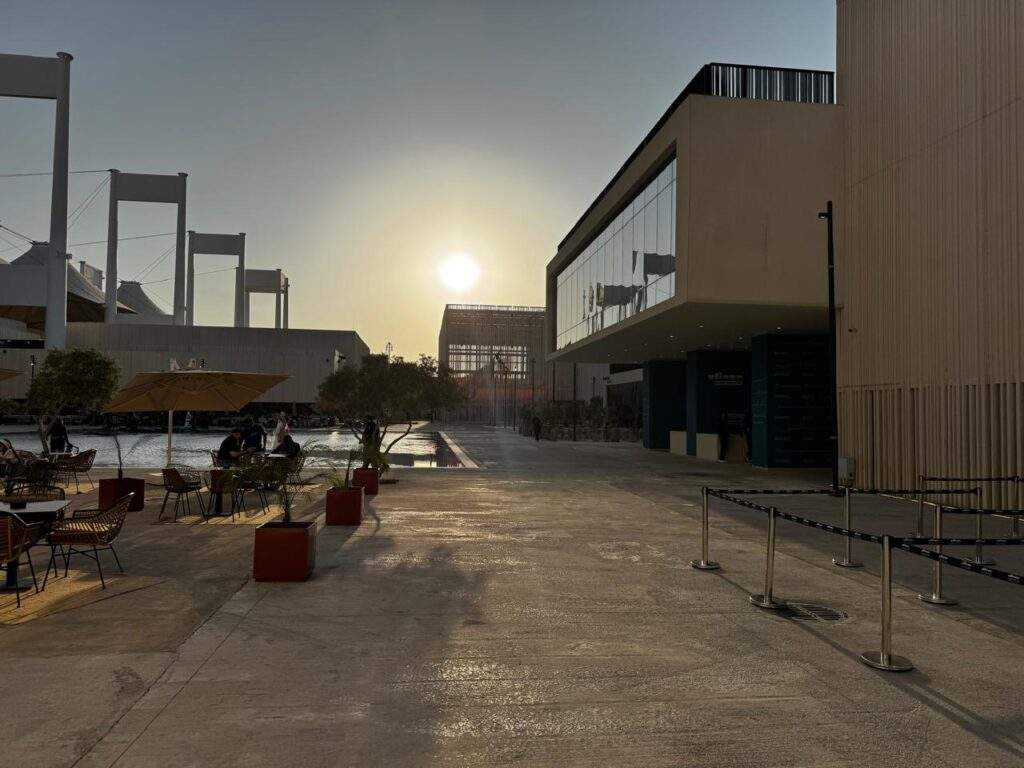
The Beginning (البداية): An Immersive Spiritual Prelude
The “Beginning” section serves as an emotional and intellectual gateway into the biennial. Designed not merely as an introduction but as an experiential reflection, it invites visitors to explore the sacred artifacts and symbolic representations that transcend the physical realm.
Among the key exhibits:
- Seven Abbasid Columns: These towering marble columns, originating from the Abbasid era (circa 785-786 CE), once formed part of the arcades surrounding the Kaaba in the Grand Mosque of Mecca. Standing for over 1,200 years, these relics bear witness to countless generations of pilgrims. The columns were transported from Egypt and the Levant by land and sea, under the directive of Caliph Al-Mahdi and later restored by Ottoman Sultan Selim II in 1572 CE.
- The Black Stone’s Silver Frame: Encasing one of the most venerated relics in Islam, this silver frame has safeguarded the Black Stone at the Kaaba for centuries. Initially commissioned by Abdullah Ibn al-Zubayr in the 7th century, this encasement has been periodically renewed by various rulers, with the most recent one installed in 1996 under King Fahd bin Abdulaziz Al Saud.
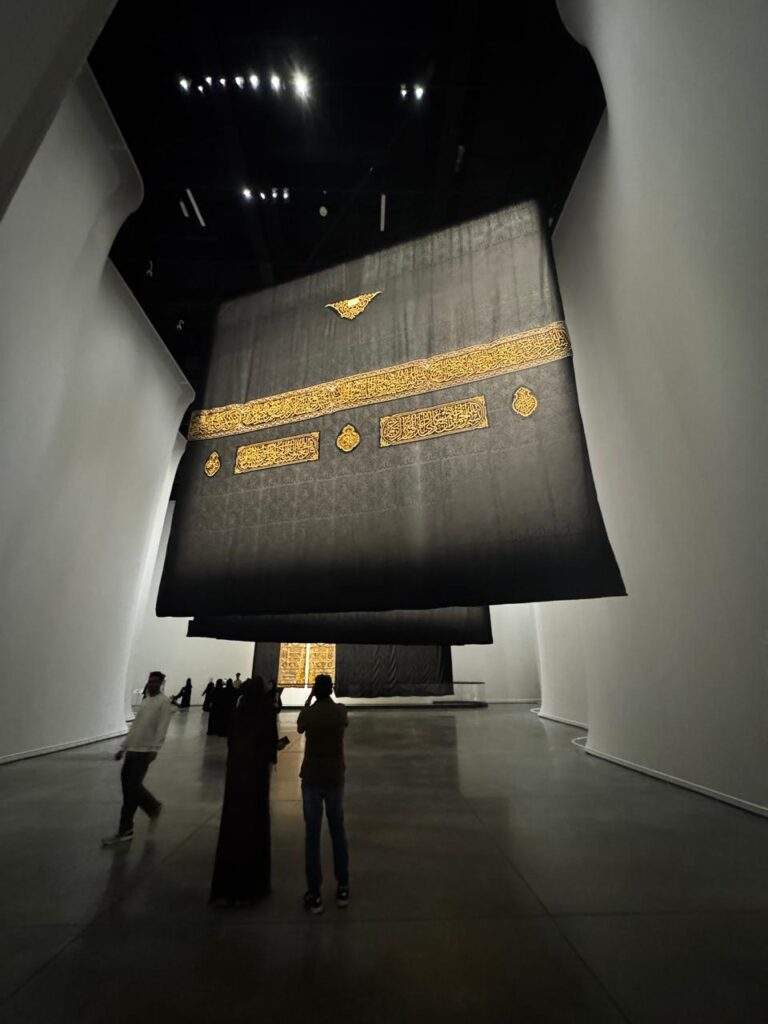
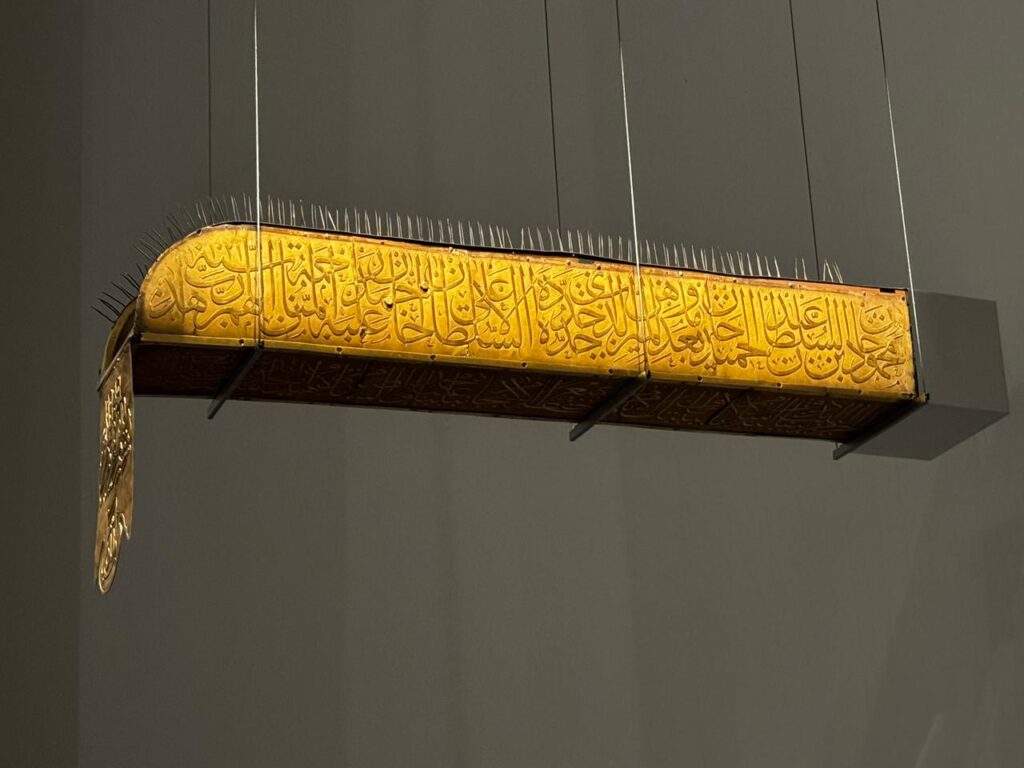
The Sacred Cities: Illuminating Mecca and Medina
This section pays homage to the spiritual centrality of Mecca and Medina, the two holiest cities in Islam. The showcased artifacts highlight their historical and contemporary significance.
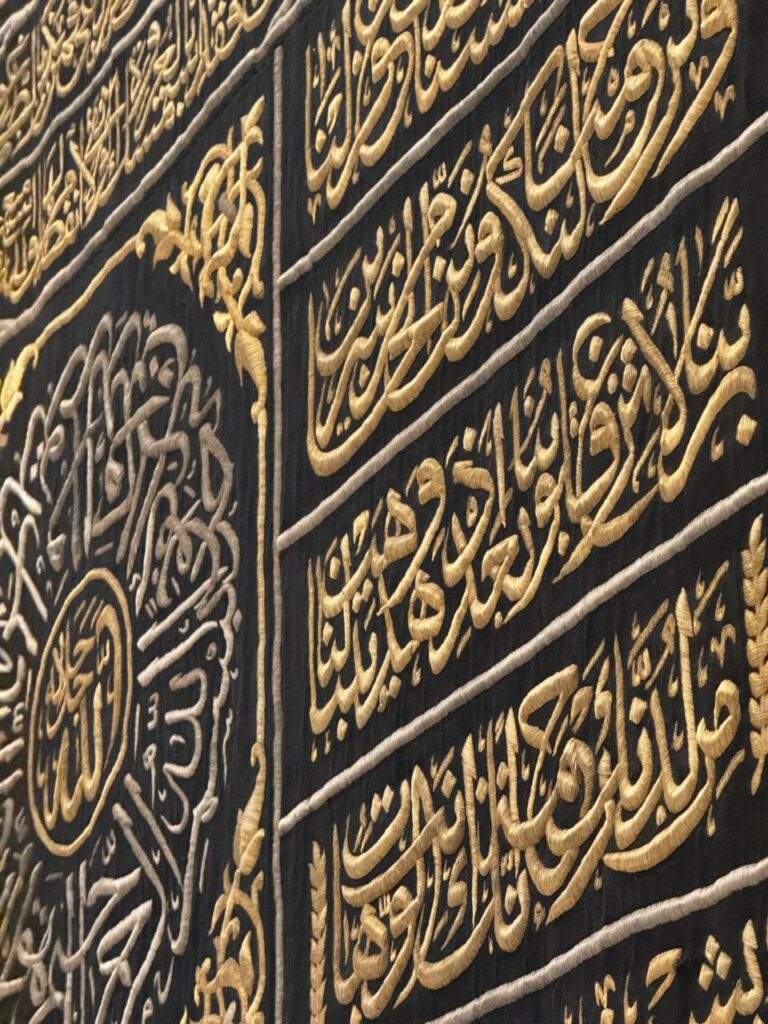
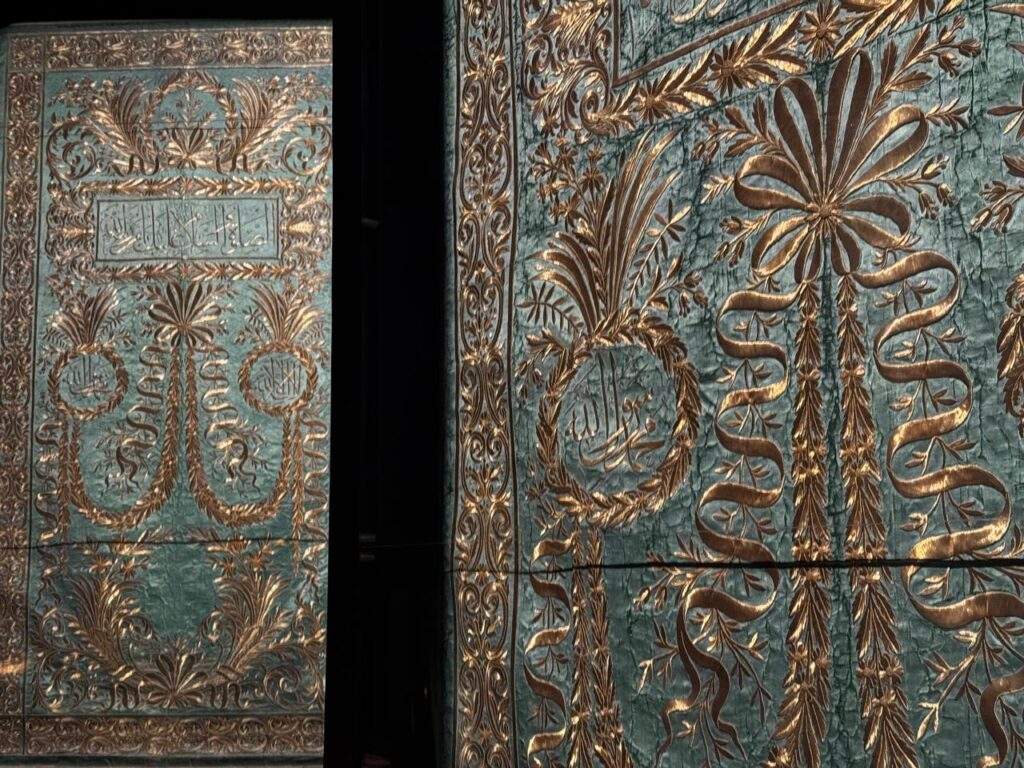
Among the notable exhibits:
- A rare 1928 film documenting Hajj pilgrims from Indonesia, offering one of the earliest audiovisual records of Mecca.
- The Dome Cover of Maqam Ibrahim, historically placed over the revered footprint of Prophet Ibrahim.
- Intricately woven silk drapes from the Prophet’s Mosque in Medina, reflecting centuries of devotion and meticulous craftsmanship, originally commissioned by Ottoman sultans and later adapted under Saudi custodianship.
The Umbra (المظلة): An Outdoor Architectural Experience
Unlike the previous biennial, this year’s edition introduces a large-scale outdoor pavilion, characterized by a sprawling architectural canopy (المظلة) that fuses Islamic geometric patterns with modern engineering principles.
Architectural highlights:
- Constructed with modular GRC panels, the pavilion allows an interplay of natural light and shade, echoing the mashrabiya technique.
- An immersive soundscape installation, designed to capture and amplify ambient spiritual recitations from various Islamic sites.
- Digital projections narrating the history of architectural evolution in Islamic civilization.
The Holy Vestments: The Kaaba’s Kiswah and the Silk Legacy
Among the most revered sections, this exhibition showcases the evolution of the Kiswah, the black silk drape that adorns the Kaaba. The biennial presents:
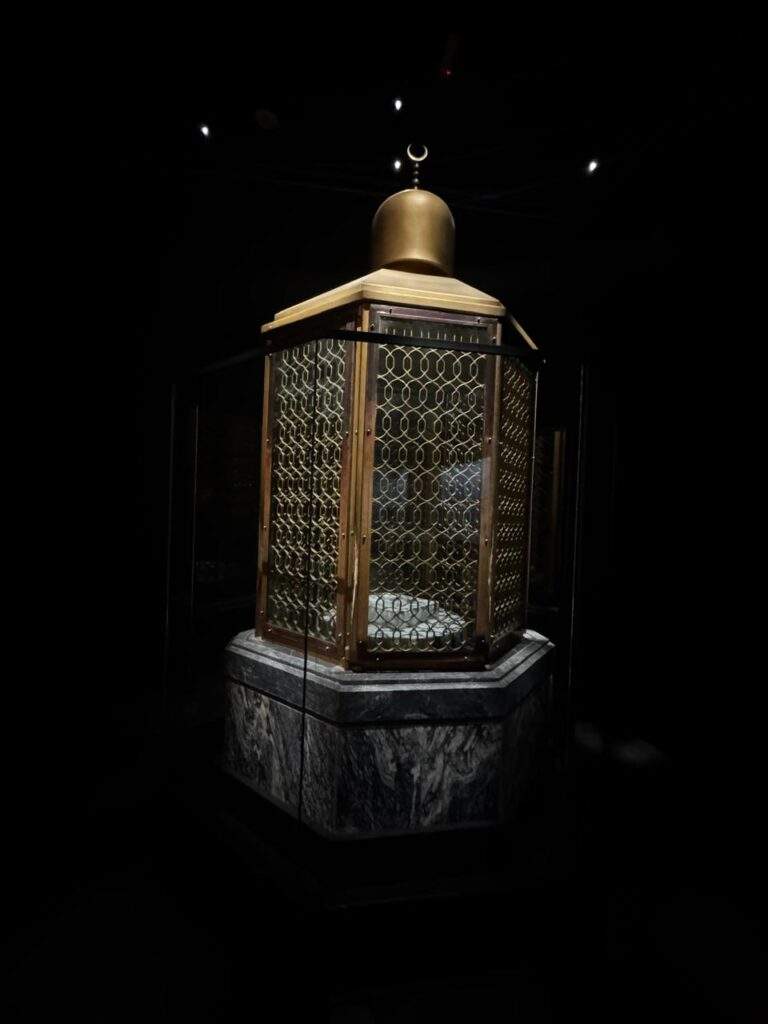
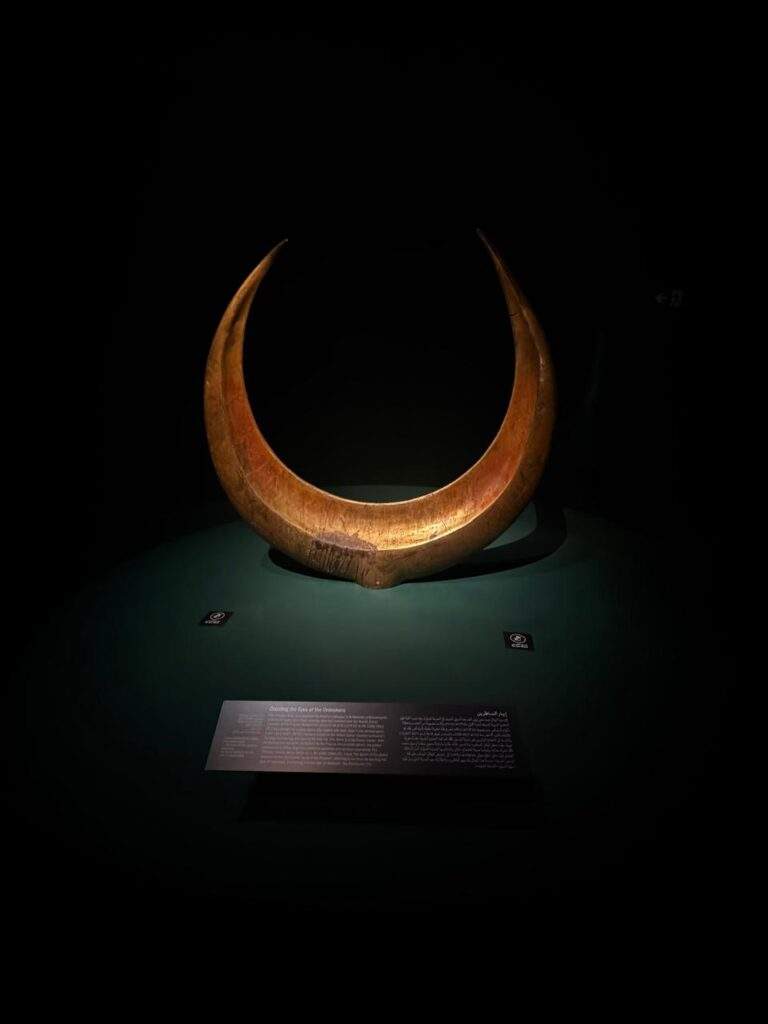
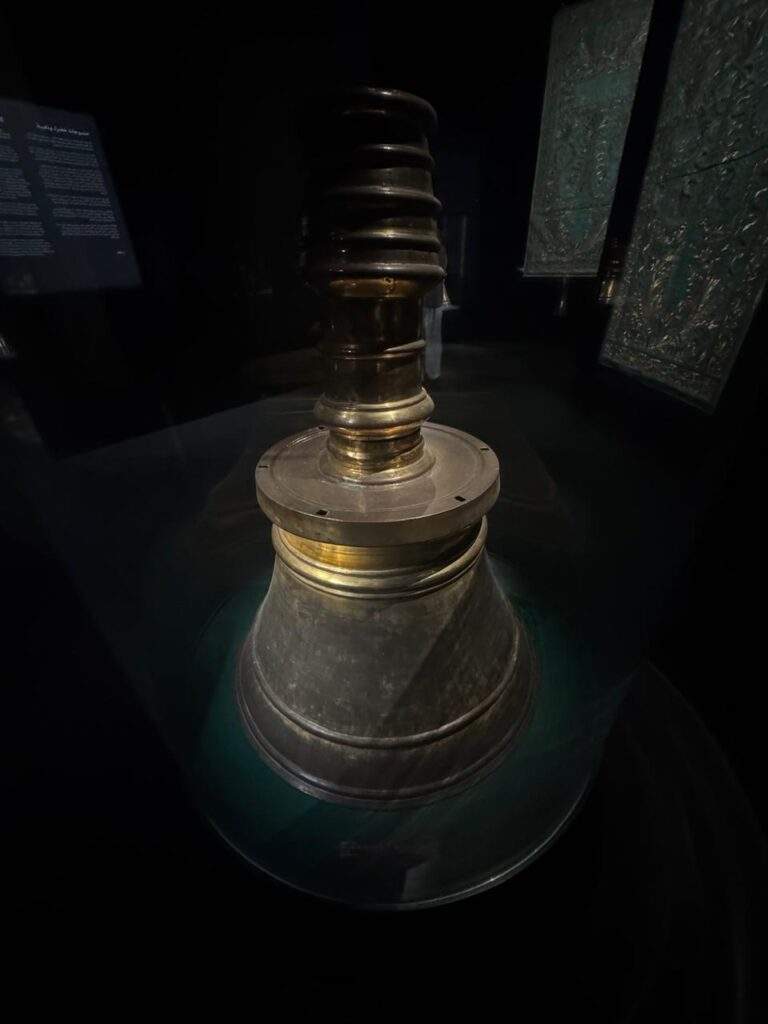
- Historical Kiswah samples dating back to the 19th and 20th centuries.
- A rare embroidered panel from the era of King Faisal (1964-1975), featuring a unique Quranic verse arrangement.
- Golden and silver-threaded textiles from Medina’s Prophet’s Mosque, emphasizing the royal patronage that has safeguarded these sacred textiles over centuries.
Art Meets Spirituality: Contemporary Expressions of Faith
For the first time, the biennial bridges the historical with the contemporary by featuring modern interpretations of sacred Islamic motifs.
Notable exhibits:
- A mixed-media installation by contemporary artist Ahmed Mater, reinterpreting the concept of Tawaf (the circumambulation of the Kaaba) through a kinetic light sculpture.
- Calligraphic engravings inspired by Quranic manuscripts from the 10th century, created by artists exploring the intersection of tradition and innovation.
- A virtual reality experience, allowing visitors to step into historical reconstructions of early Islamic architectural masterpieces.
A Testament to Islamic Artistic Grandeur
“Art in Islam transcends material forms; it is a language that speaks to the soul, inviting reflection, reverence, and renewal.”
The Islamic Arts Biennial Edition 2 masterfully intertwines historical reverence and contemporary artistic expression, offering visitors an unparalleled opportunity to engage with the spiritual and aesthetic essence of Islamic heritage. Whether through ancient relics, architectural marvels, or cutting-edge installations, this year’s exhibition reaffirms the timeless dialogue between faith and artistic ingenuity.
The Al Thani Collection: A Dazzling Showcase of Regal Artistry at Islamic Arts Biennial Edition 2
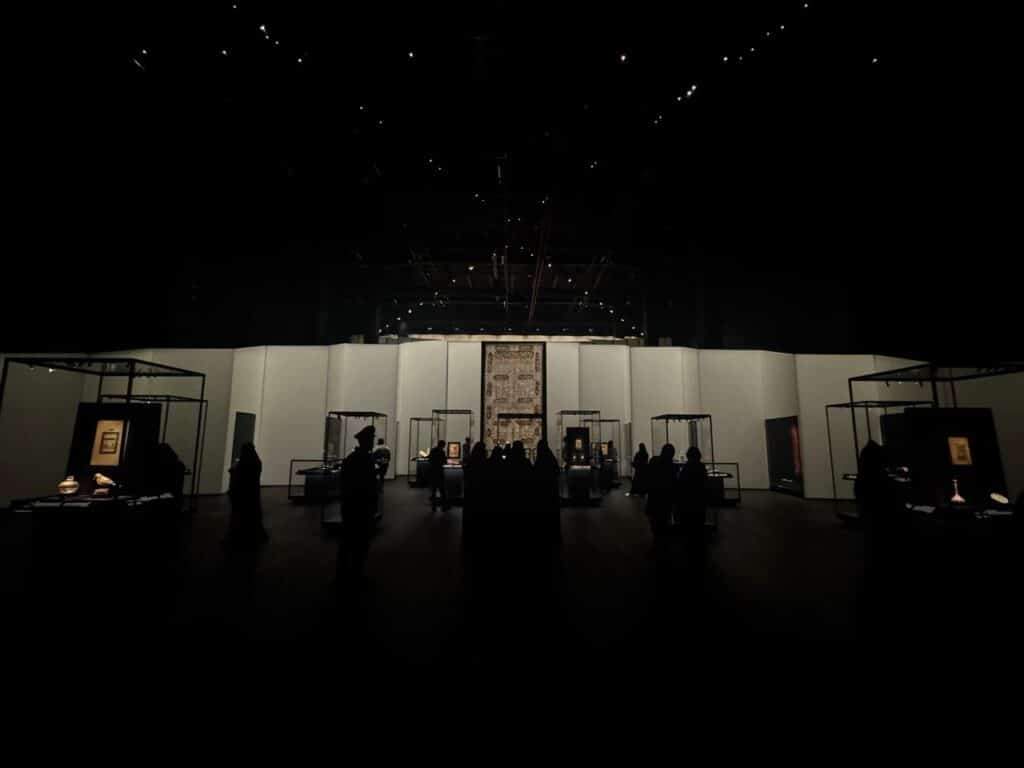
Introduction: The Crown Jewel of the Biennial
Among the most captivating exhibitions at Islamic Arts Biennial Edition 2 (بينالي الفنون الإسلامية النسخة ٢) is the Al Thani Collection, an extraordinary assemblage of rare and historically significant jewelry and artifacts. This collection is a testament to the unparalleled craftsmanship and opulence of Islamic and Mughal artistry, featuring exquisite gemstones, royal regalia, and objects of profound historical and aesthetic value.
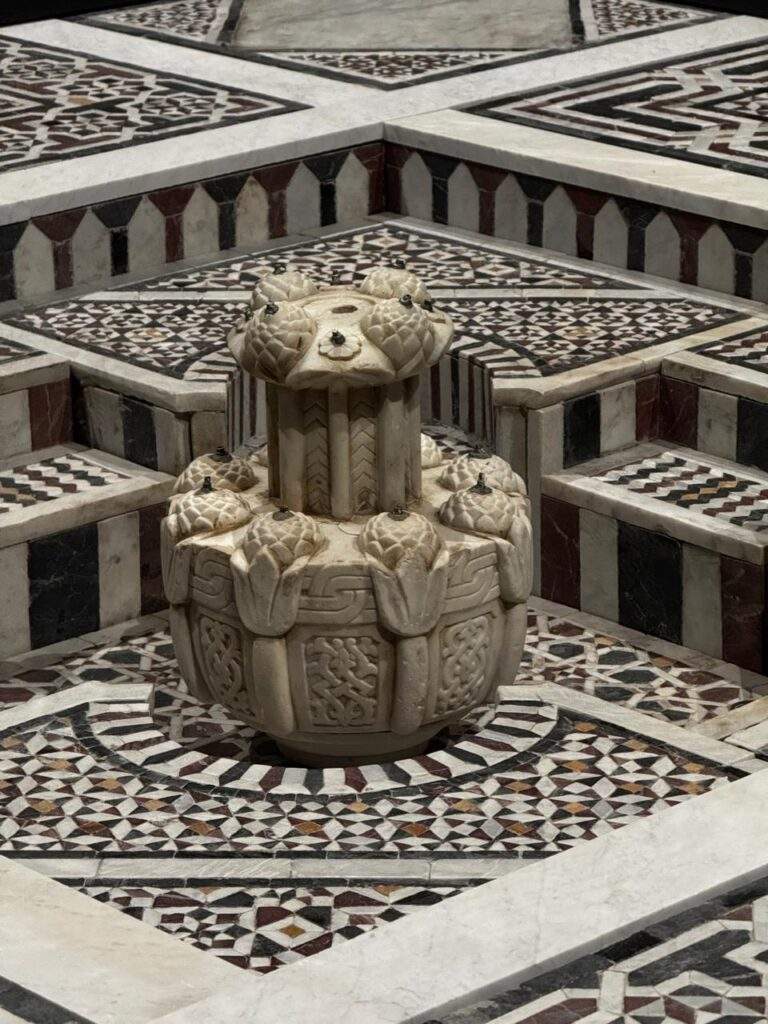
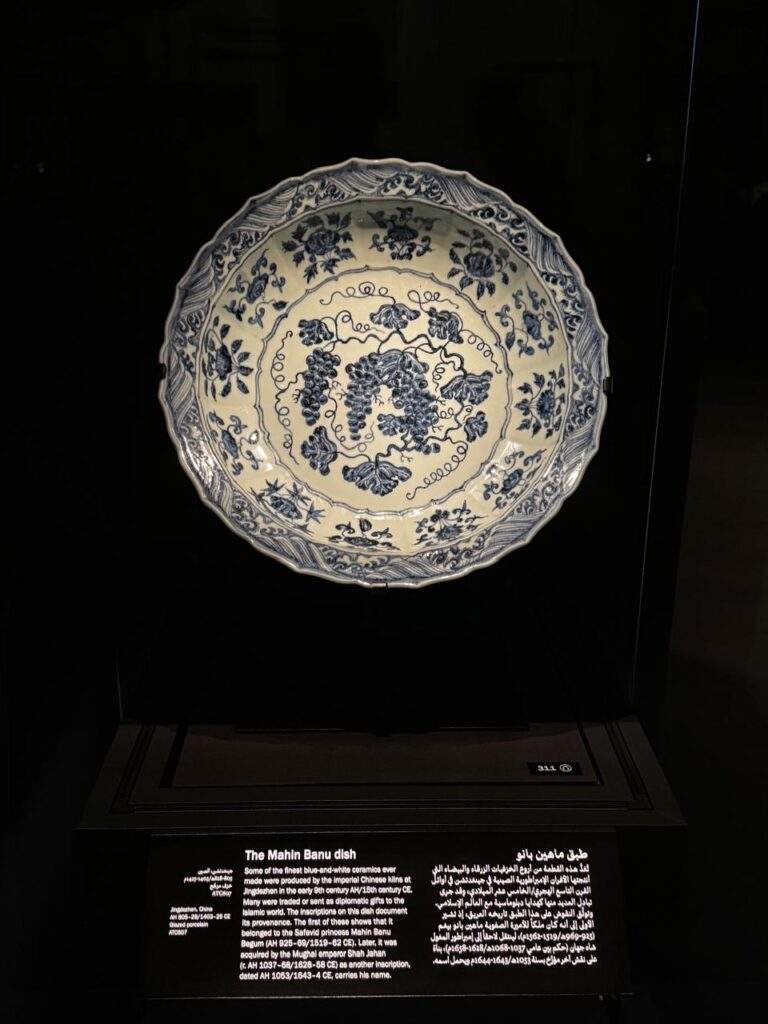
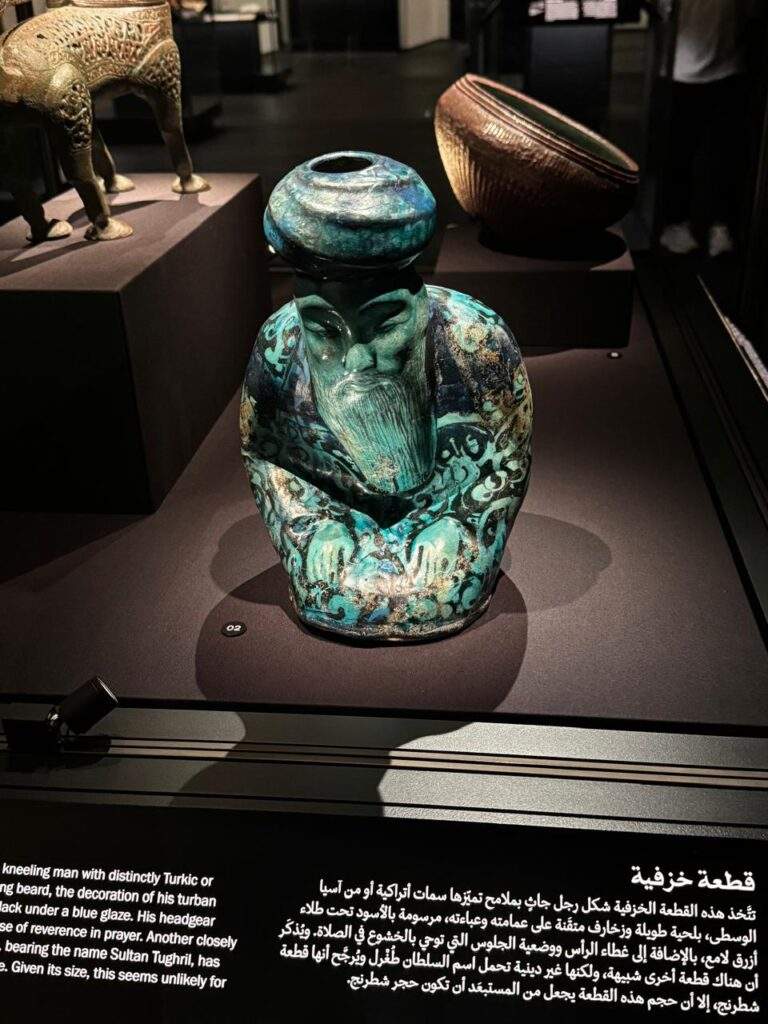
This section of the biennial, often described as the ‘crown jewel’ of the exhibition, invites visitors into a world of intricate luxury and royal splendor, where each piece tells a story of cultural heritage, dynastic prestige, and artistic ingenuity.
The Royal Treasury: The Legendary Spinel
At the heart of the collection lies the imperial spinel, a gemstone of deep crimson hue that has passed through the hands of Mughal emperors and Indian nobility for centuries. This stone, known in historical texts as Yaqoot Ramali (الياقوت الرملي), was highly revered in Mughal India, symbolizing power, wealth, and divine favor.
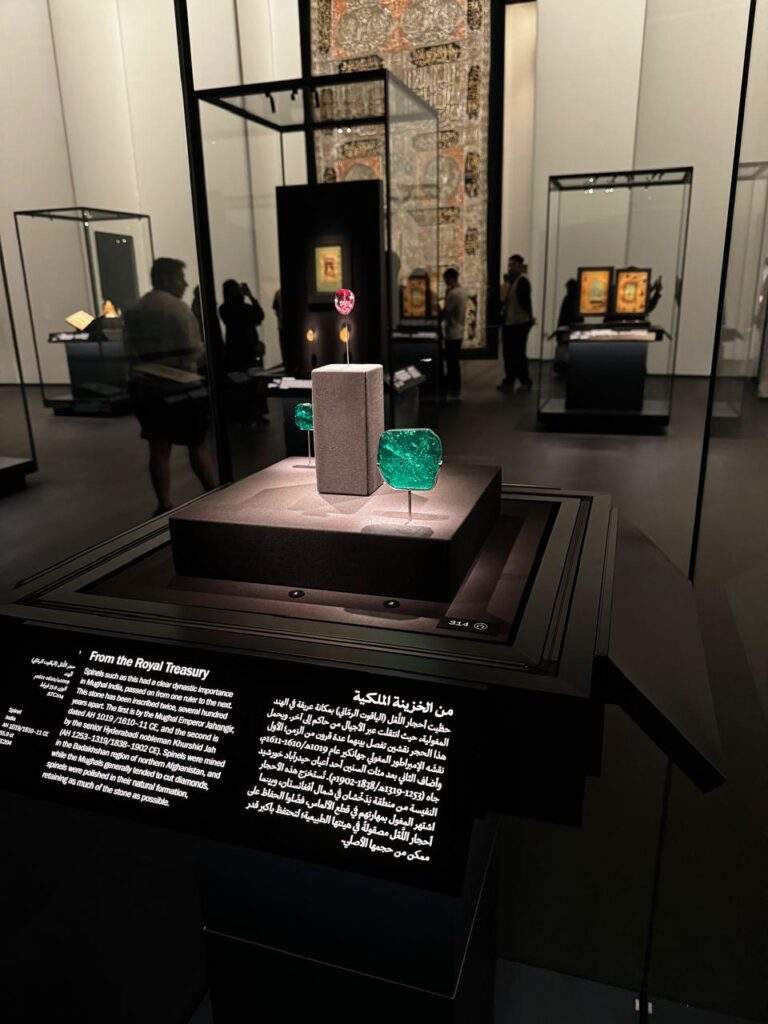
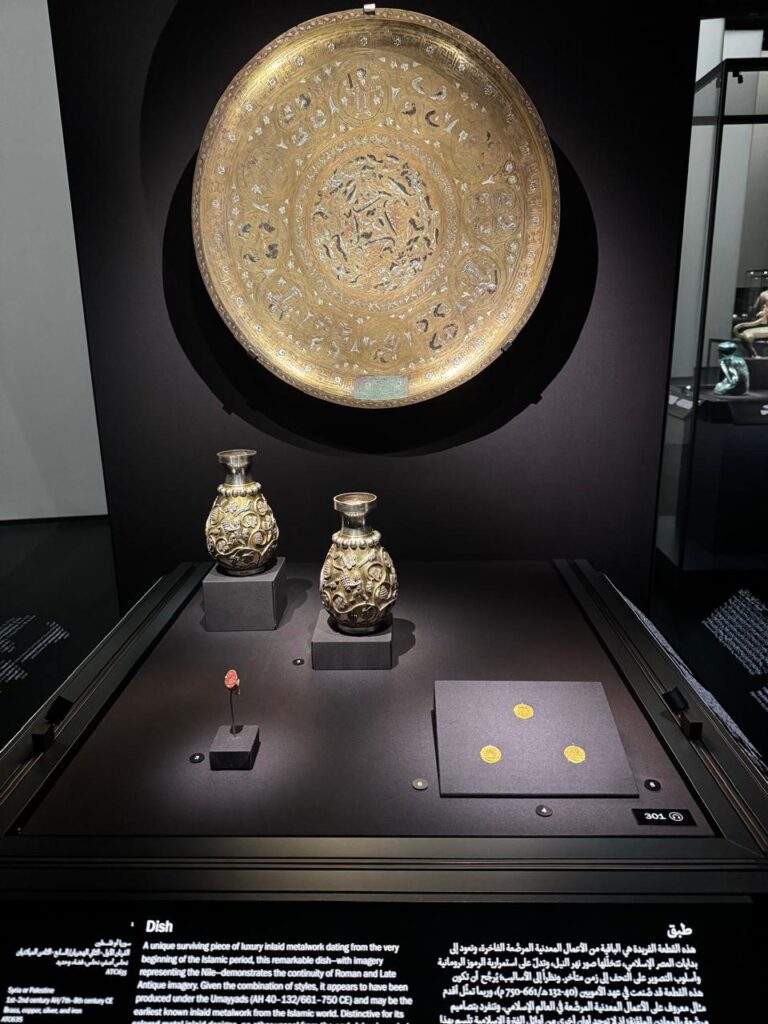
- The spinel features two engravings, separated by centuries:
- The first inscription was etched in 1610 CE (1019 AH) by Emperor Jahangir.
- The second was added much later by Khurshid Jah of Hyderabad (1838–1902 CE, 1253–1319 AH).
- Originating from the famed Badakhshan mines of northern Afghanistan, these gemstones were typically left uncut by the Mughals, preserving their natural size and brilliance, unlike their famed expertise in diamond cutting.
This masterpiece is a testament to the continuity of dynastic treasures, passed down through generations of rulers who sought to etch their legacies onto one of nature’s most prized creations.
The Briolette of India: A Diamond of Unequaled Purity
One of the most breathtaking pieces in the collection is the Briolette of India, a flawless diamond that boasts unparalleled clarity and light reflection. This exceptionally rare gemstone is a prime example of the legendary craftsmanship of Indian lapidaries, whose expertise in diamond faceting set global standards.
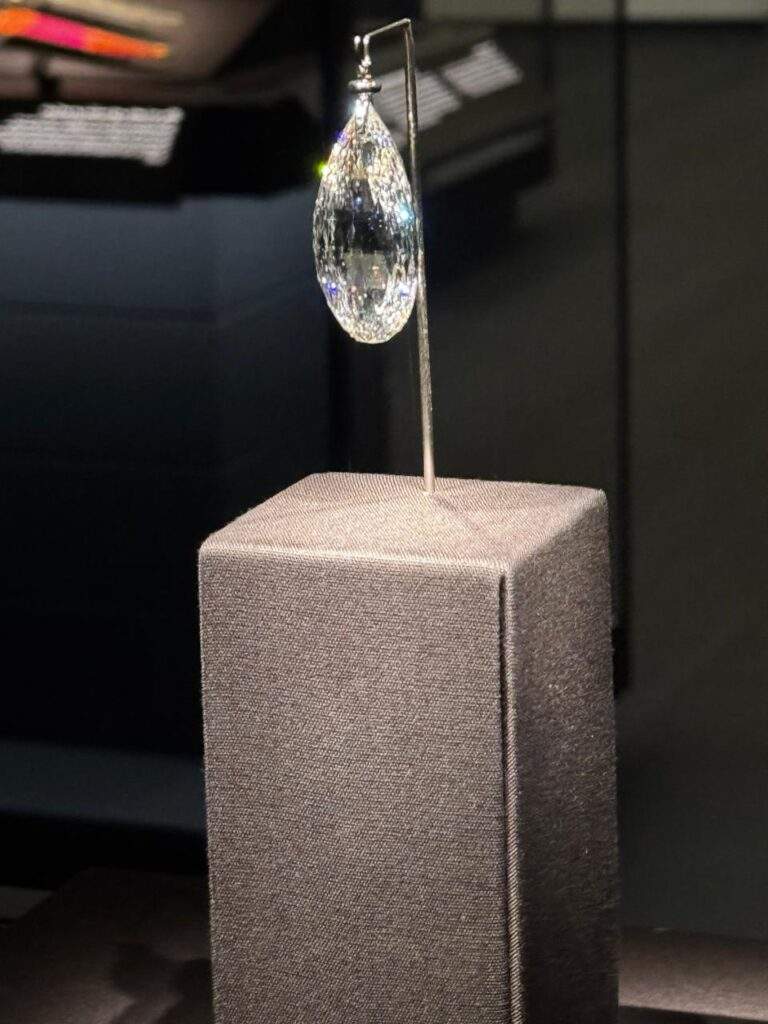
- The briolette cut enhances its luminosity, allowing it to reflect light from multiple angles.
- The diamond has adorned several iconic pieces crafted by legendary jewelers, including Louis Cartier and Harry Winston.
- It was immortalized in an artistic portrait by renowned fashion photographer Richard Avedon, showcasing its exceptional radiance and prominence in high jewelry.
This diamond, regarded as one of the finest ever discovered, exemplifies the opulence and meticulous artistry of Islamic and Mughal jewelry traditions.
The Chess King: A Fatimid Masterpiece in Rock Crystal
In a striking departure from conventional jewelry, the Al Thani Collection also features a magnificent chess king, carved entirely from a single block of rock crystal. This piece not only represents the grandeur of Islamic decorative arts but also offers insight into the elite pastimes of the Fatimid aristocracy.
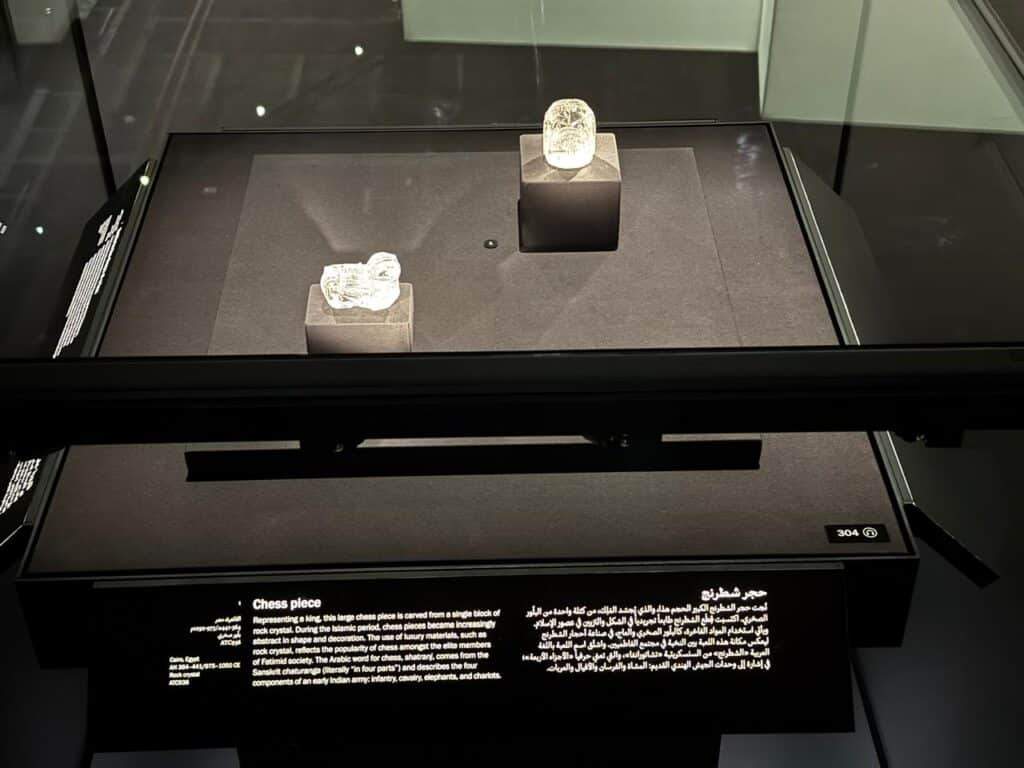
- The abstracted design and minimalistic form reflect the stylization of Islamic chess pieces, moving away from figurative representation.
- Crafted during the Fatimid Caliphate (10th–12th century CE), this chess king exemplifies the influence of luxurious materials such as ivory, rock crystal, and precious metals in elite Islamic leisure culture.
- The term “shatranj” (الشطرنج), derived from the Sanskrit “Chaturanga”, signifies the four divisions of an ancient Indian army—infantry, cavalry, elephants, and chariots—a direct link to the game’s historical military origins.
This chess king is more than a game piece—it is a work of artistic and strategic brilliance, encapsulating both the intellectual pursuits and material wealth of medieval Islamic courts.
The Mahii-Maratib: The Imperial Fish Insignia
Another extraordinary object on display is the Mahii-Maratib (ماهي-مراتب), a prestigious imperial insignia in the form of a fish, once awarded by Mughal emperors to their most esteemed allies and warriors.
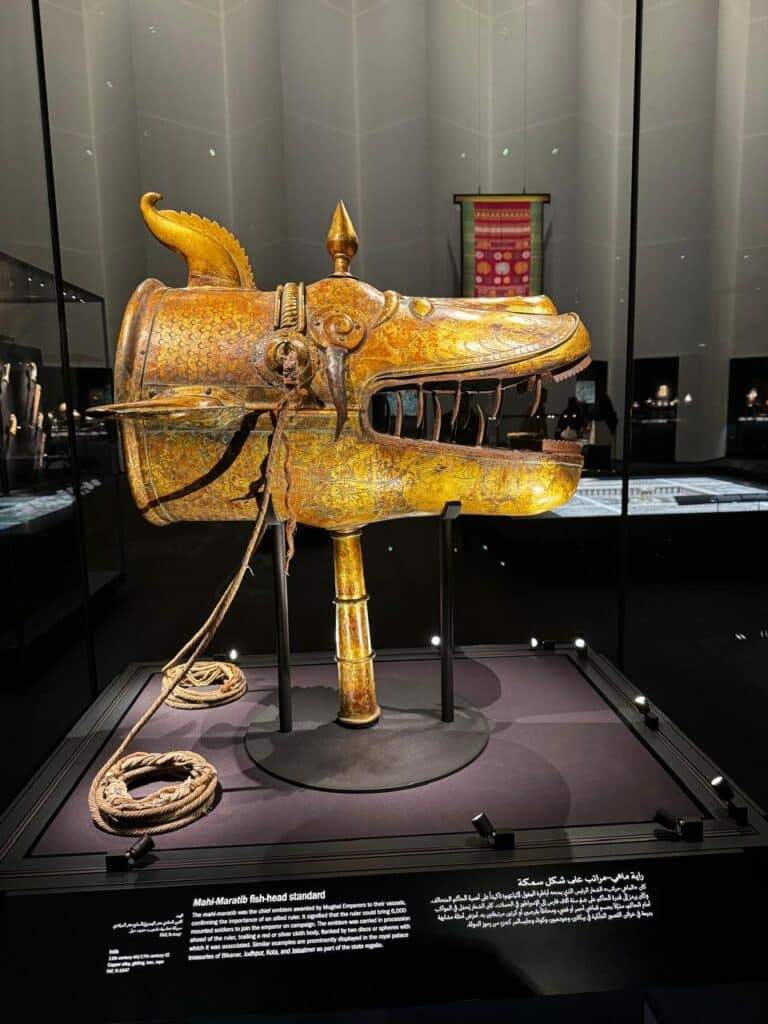
- This insignia was a symbol of high rank, indicating a commander’s ability to mobilize an army of 6,000 cavalrymen for the Mughal emperor.
- In royal processions, it was carried prominently ahead of the ruler, suspended from a red or silver banner, often flanked by gilded spheres and ceremonial ornaments.
- Similar examples of these royal insignias can still be found in the treasuries of historic palaces in Bikaner, Jodhpur, Kota, and Jaisalmer, attesting to their lasting legacy in South Asian heritage.
The Mahii-Maratib is an evocative symbol of the Mughal court’s grandeur, martial prowess, and deep-rooted traditions of honor and loyalty.
Conclusion: A Collection of Timeless Magnificence
“Jewelry and artifacts are more than adornments—they are storytellers of empires, carriers of legacy, and embodiments of artistic excellence.”
The Al Thani Collection at Islamic Arts Biennial Edition 2 is an unparalleled exhibition of regal artistry, showcasing the finest examples of Islamic and Mughal craftsmanship. From imperial gemstones to intricately carved artifacts, each piece represents centuries of cultural heritage, craftsmanship, and dynastic splendor.
For visitors, this collection is not merely a display of luxury—it is a window into the grandeur of Islamic history, where the material meets the mystical, and where every gemstone, engraving, and ornament whispers the stories of emperors, artisans, and civilizations past.

